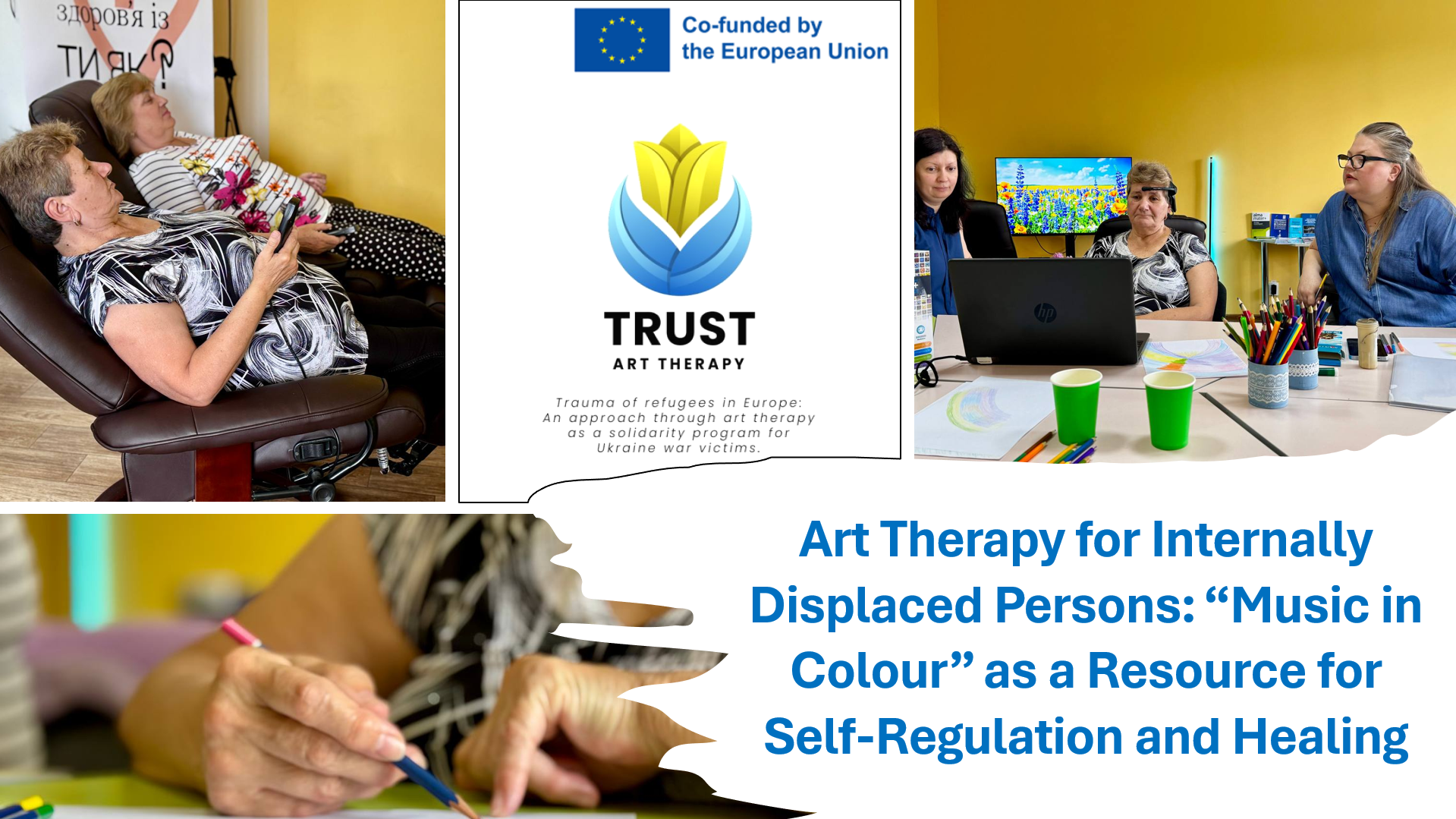On June 11, 2025, a new session of art therapy titled “Music in Colour” was organised for internally displaced persons currently residing in the dormitory of the Separate Structural Unit of the Poltava Oil and Gas Vocational College of the National University “Yuri Kondratyuk Poltava Polytechnic”.
Olena Ostrohliad, Senior Lecturer at the Department of Fine Arts, and Lesia Klevaka, PhD in Pedagogy, Associate Professor, and Acting Head of the Department of Psychology and Pedagogy, led the session.
This time, participants – adult internally displaced persons (IDPs) – immersed themselves in a world of sound and colour, exploring the influence of music on the human psyche and emotional state. The facilitators noted that listening to music can not only improve mood but also reduce anxiety, stabilise breathing and heart rate, activate brain function, and help restore inner balance. Scientific research findings that confirm these effects were also shared.
Participants listened to musical pieces with a variety of emotional tones – from calming to energising or inspiring. They discussed their personal musical preferences and learned how to consciously use music as a tool for self-regulation, emotional healing, and overall well-being. The music that played truly touched the soul.
The central part of the session was the art therapy exercise “Music in Colour”, during which participants painted their emotions evoked by the music. This creative process helps individuals become more aware of their emotional state, express it safely, and find inner harmony. Drawing to music is not just about lines and colours – it is, above all, a dialogue with oneself, a way to develop emotional intelligence and the ability to reflect. This is especially important for internally displaced persons, who often lack the space or opportunity to process their emotions fully.
The session also included a segment of sensory relaxation, where participants rested in comfortable reclining massage chairs while listening to the soothing sounds of nature, including rustling leaves, flowing water, rain, and birdsong. This form of therapy promotes deep relaxation, reduces stress and anxiety, and improves sleep and overall well-being.
In a world where daily stress has become commonplace, moments of quiet care and warmth are a true gift for those who have experienced loss and forced displacement.
One of the highlights of the session was the introduction of a neurocontroller. This innovative device reads brain activity and shows real-time indicators of focus, calmness, and inner harmony. Participants were able to see how their mental state changed during breathing exercises, music sessions, or meditation. This generated genuine enthusiasm: everyone was eager to become a researcher in their mind. This kind of experience helps people learn to manage their emotional states – a particularly valuable skill in conditions of prolonged stress.
“Music in Colour” is yet another step toward self-discovery, unlocking new internal resources, forming healthy emotional habits, and building inner resilience.
It is not only sound that heals. What truly heals is care.
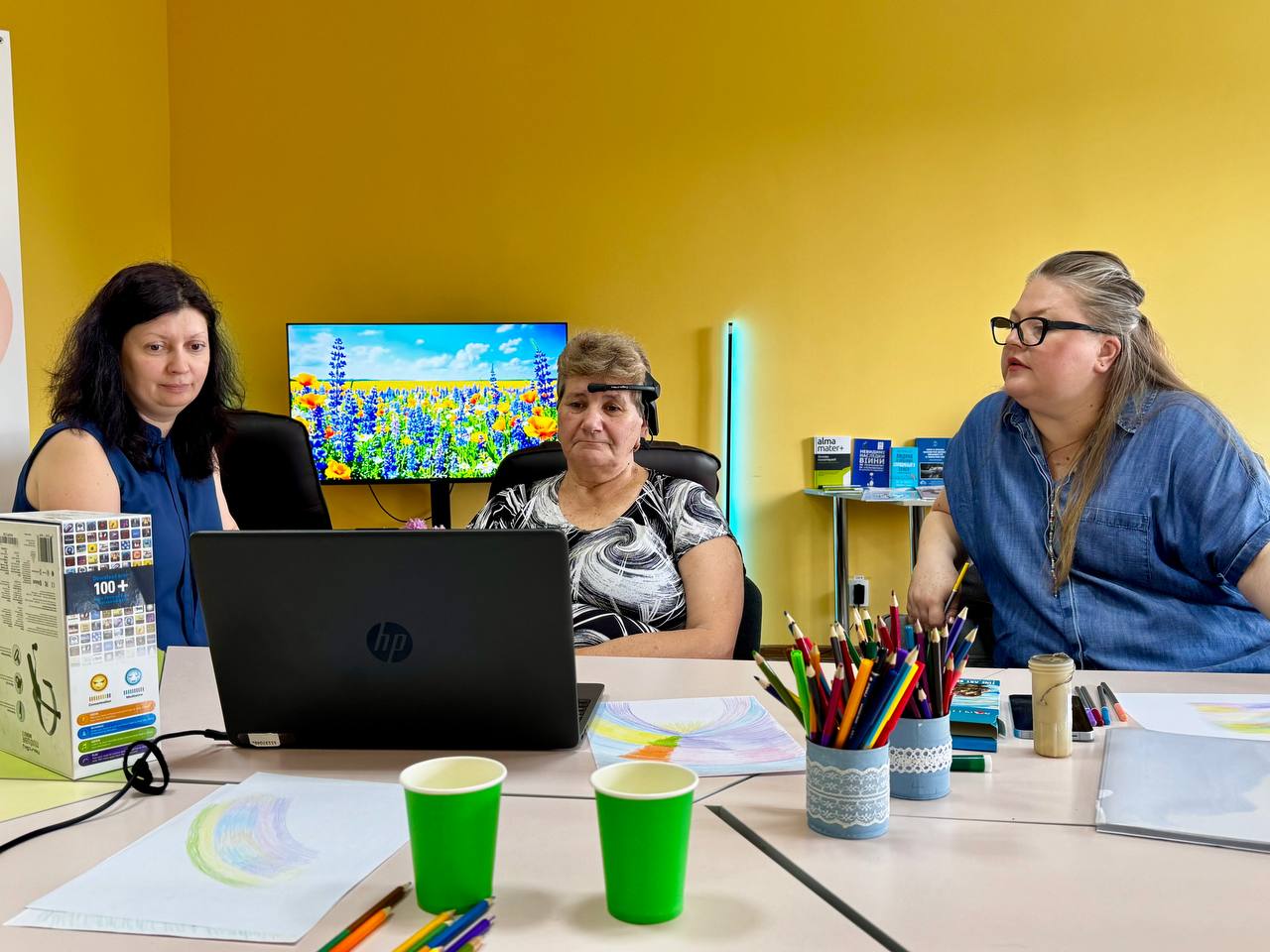

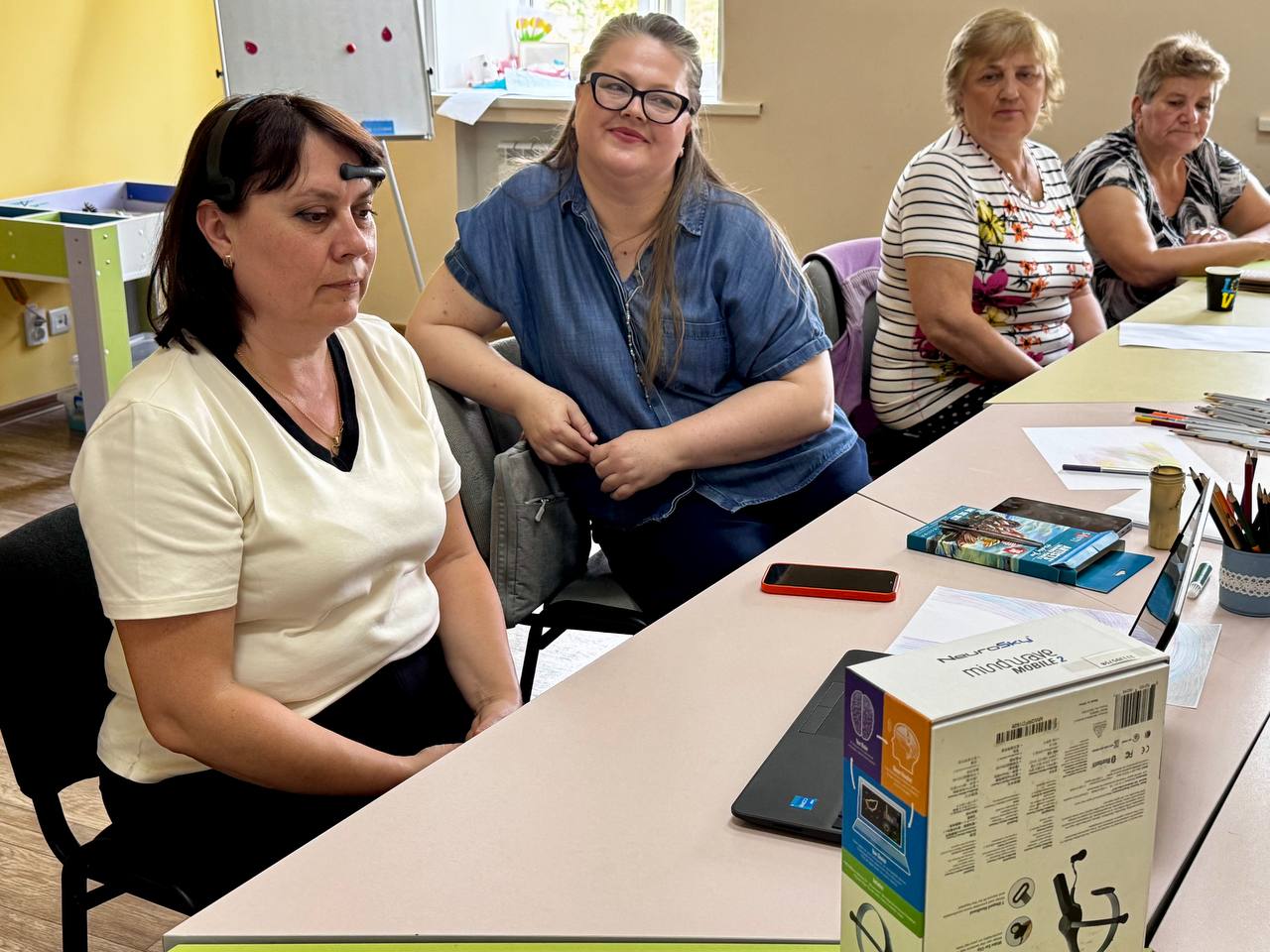
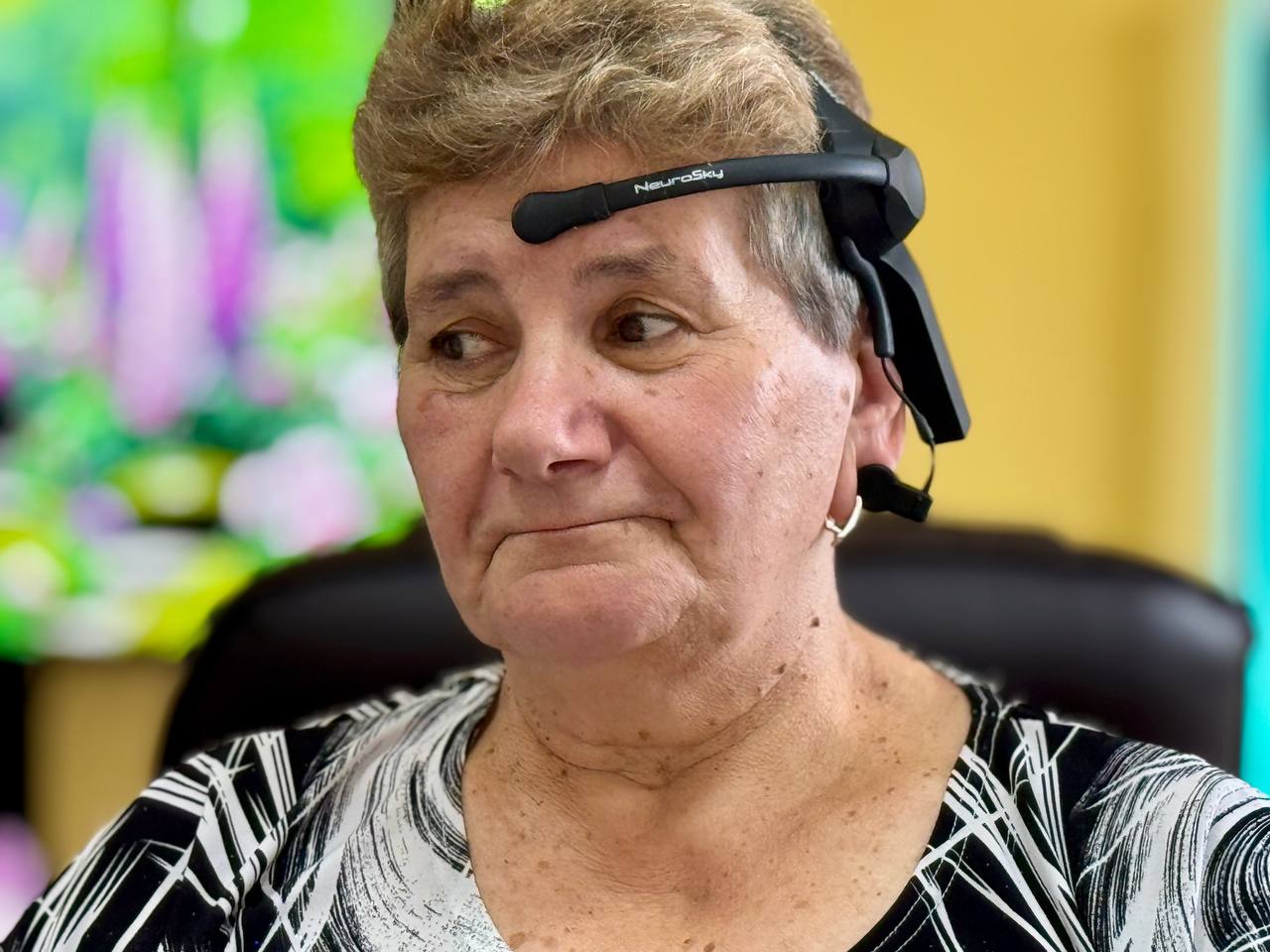
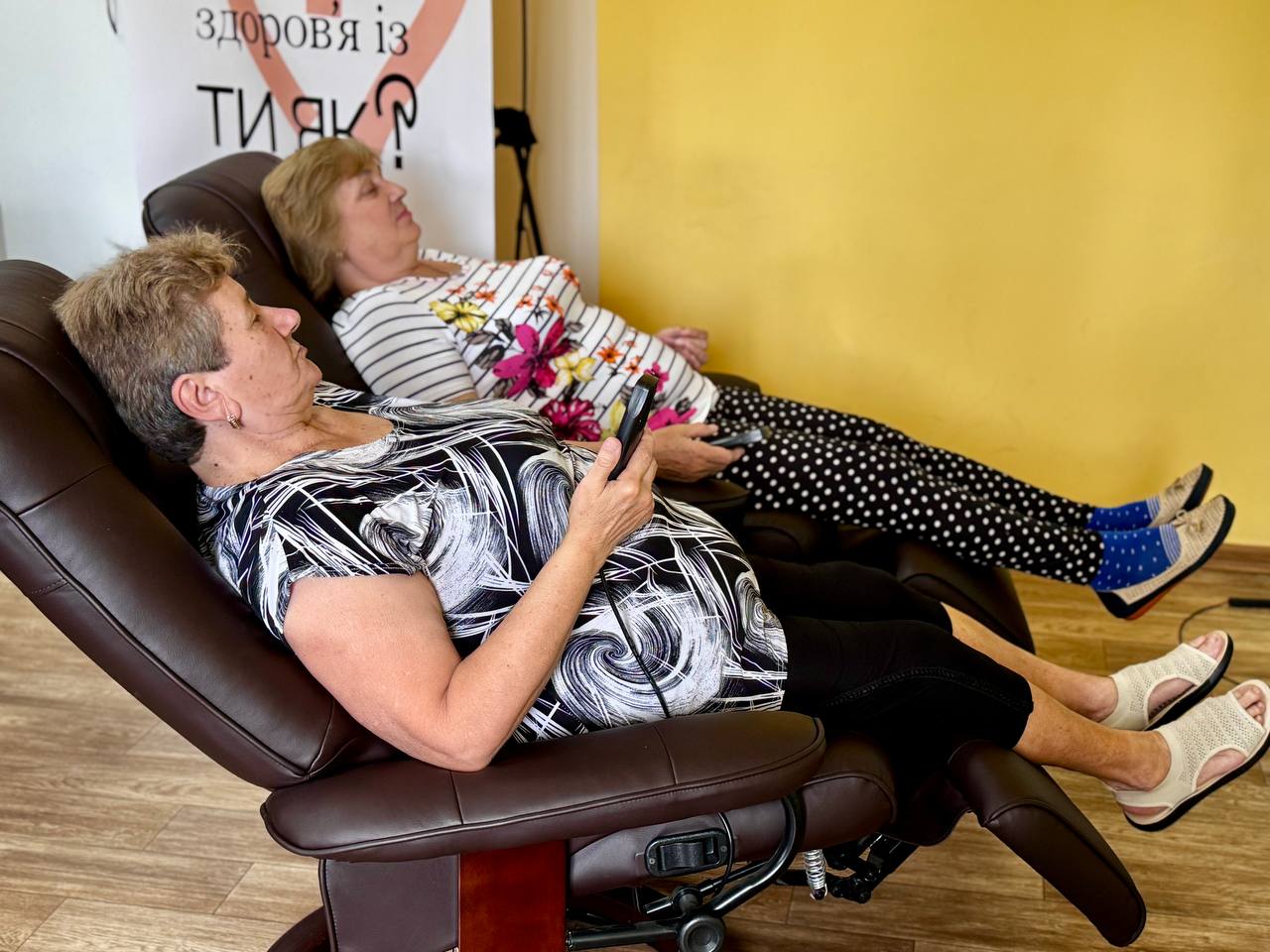

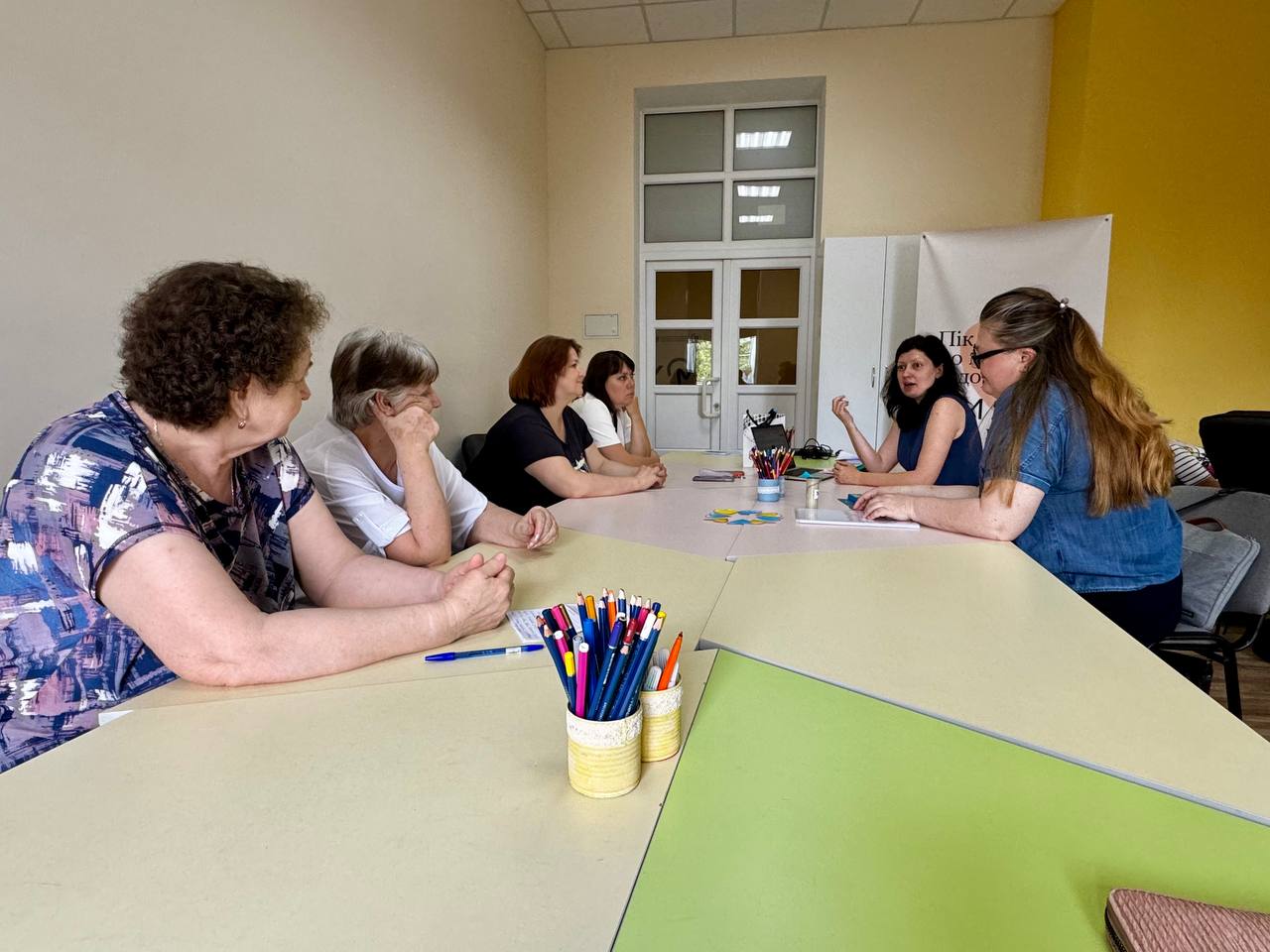
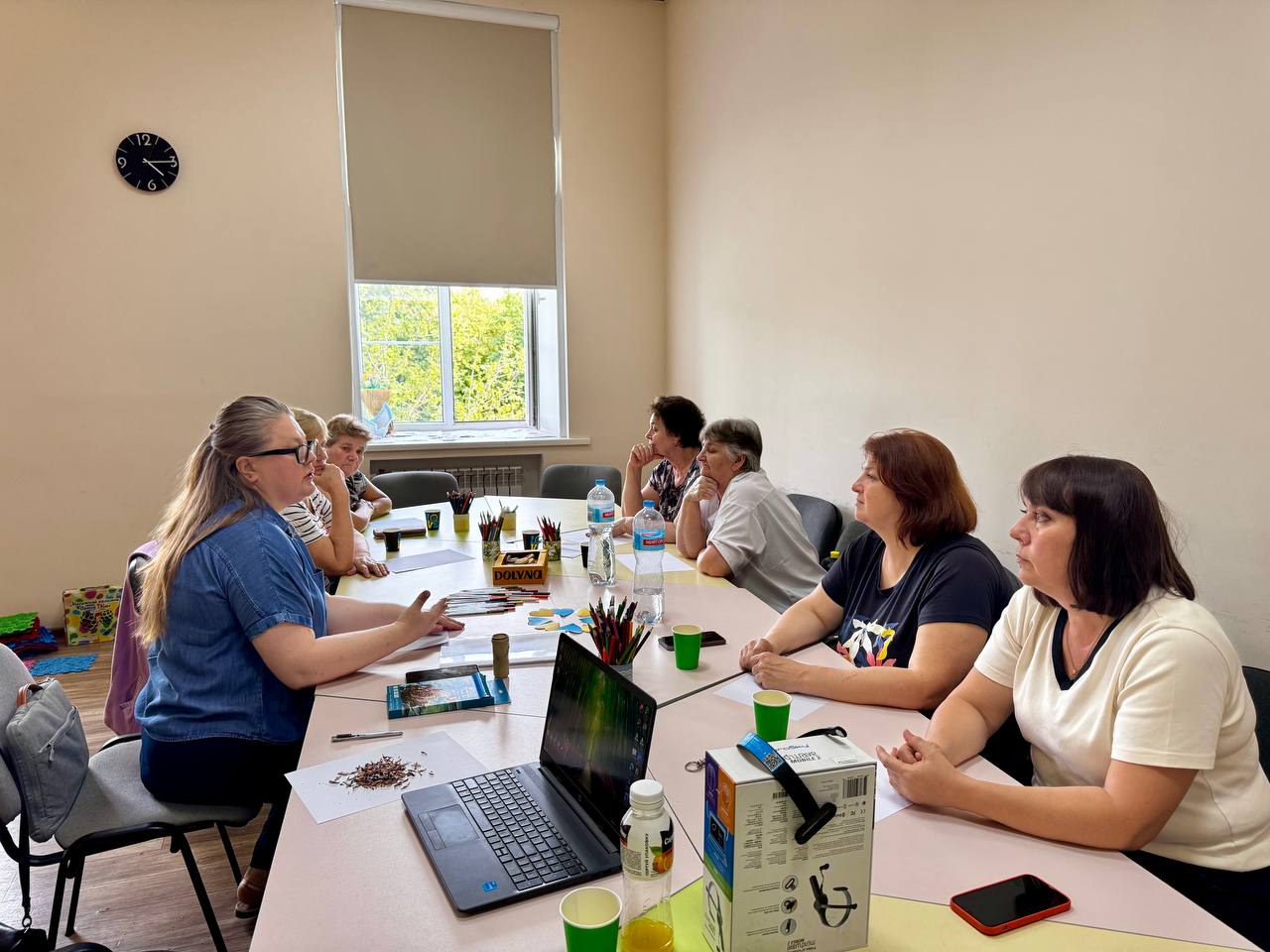

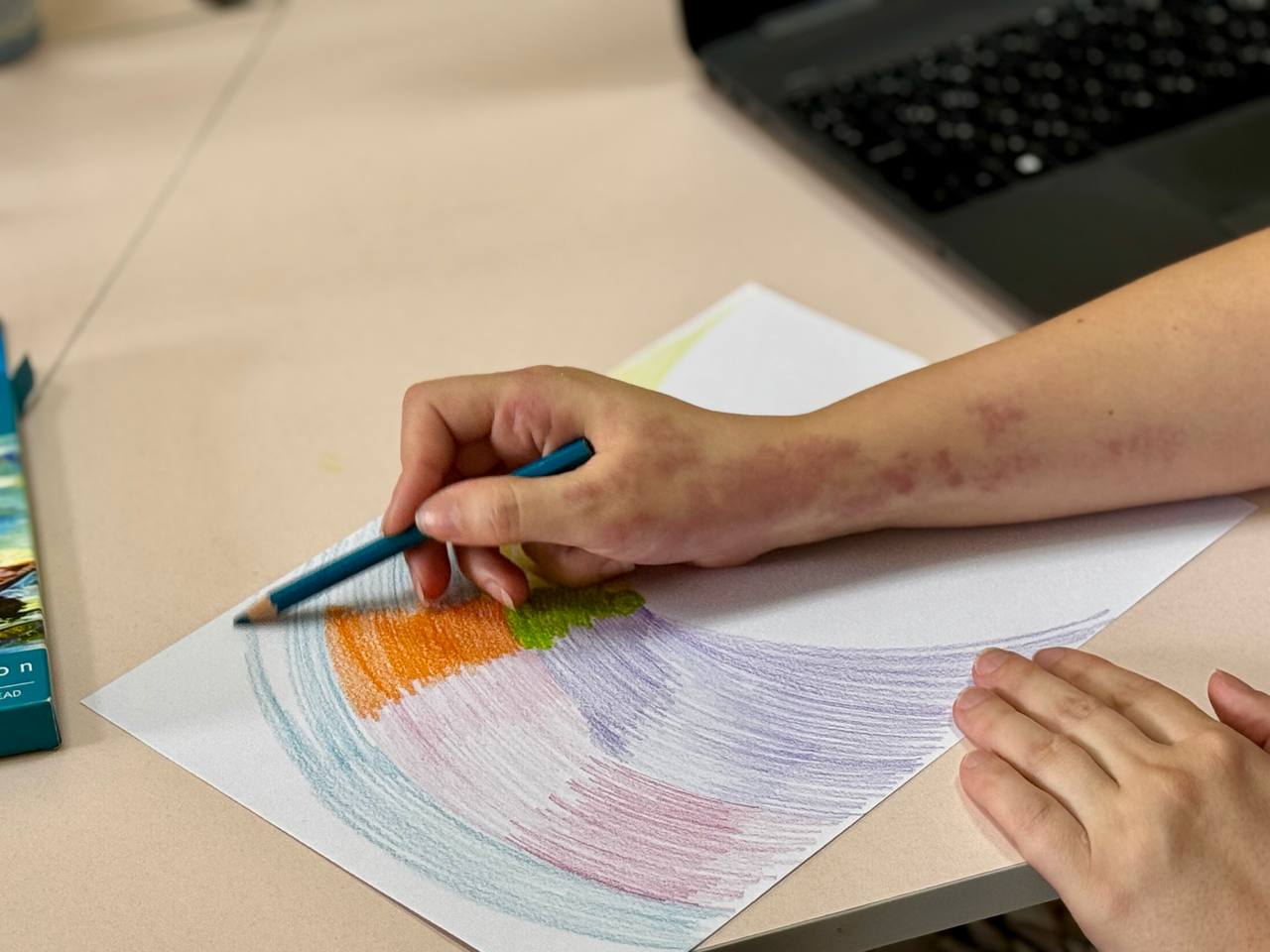
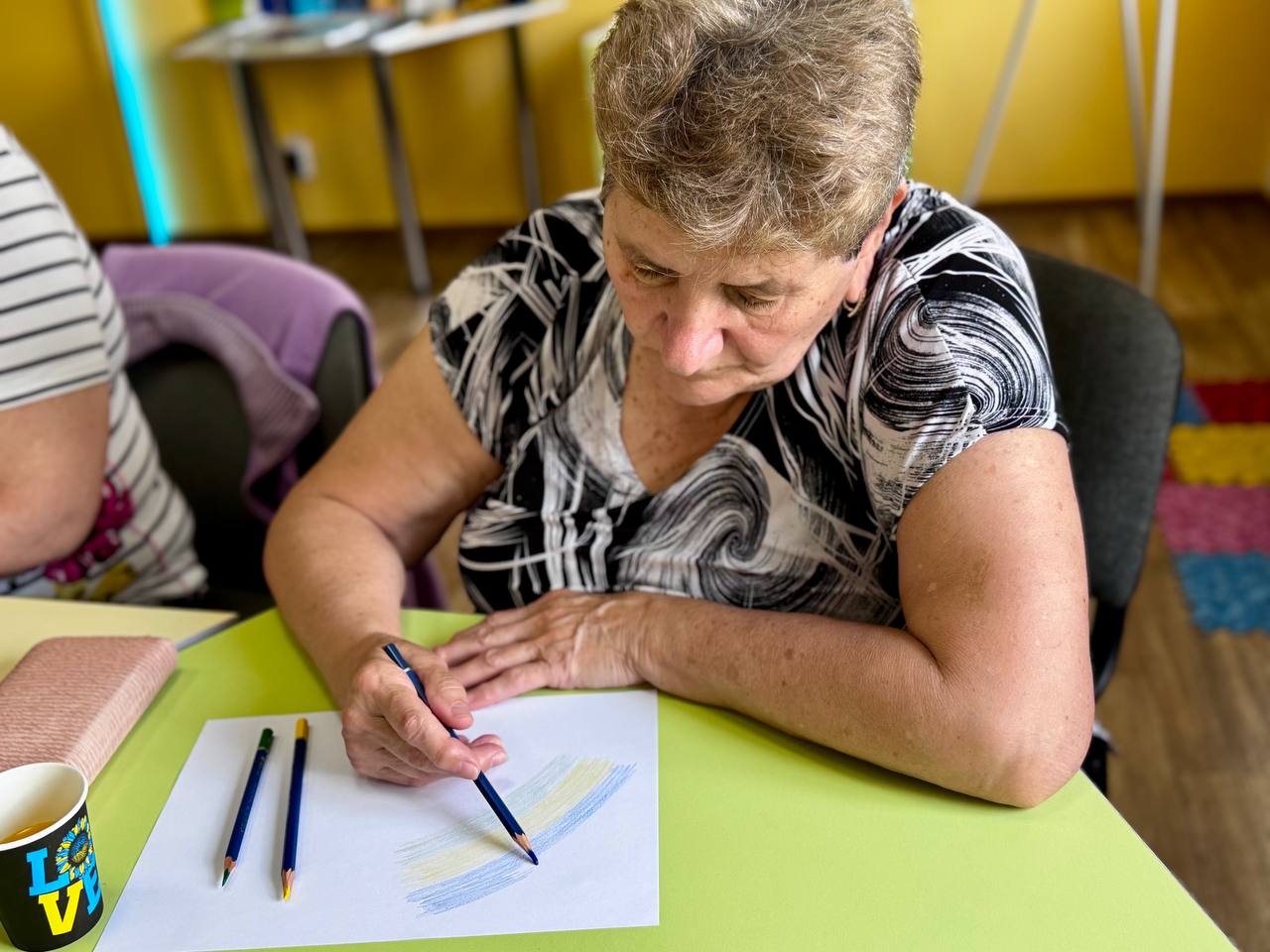
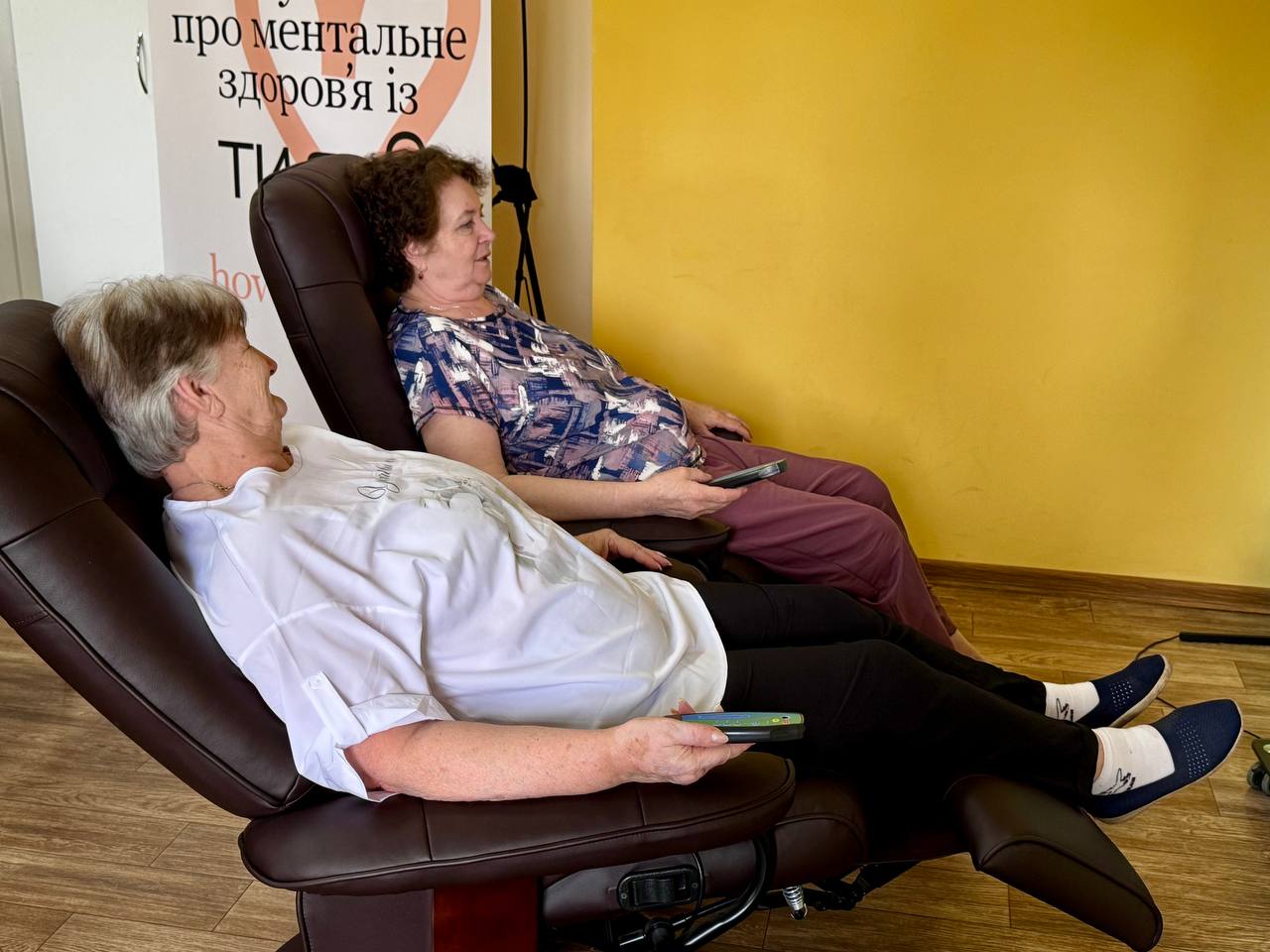
This session marked another meaningful step in the implementation of the Erasmus+ KA220-ADU TRUST project – Trauma of refugees in Europe: An approach through art therapy as a solidarity program for Ukraine war victims (Grant No. 2024-BE01-KA220-ADU-000257527). The project is co-funded by the EU and led by the Centre Neuro Psychiatrique St-Martin from Belgium, in partnership with the National University “Yuri Kondratyuk Poltava Polytechnic” (Ukraine), Greek Carers Network EPIONI (Greece), Fondazione Don Luigi Di Liegro (Italy), Lekama Foundation (Luxembourg), EuroPlural Project (Portugal).
The previous sessions included symbolic activities such as designing personal coats of arms to represent inner values, sources of strength and hope; associative drawing exercises; the “Relationships” activity aimed at reflecting on personal connections with loved ones, community, and country; discussions around “What does mental health mean to me?”; neurographic drawing; and immersion in body-oriented therapy where movement, dance, and physical expression become key tools for emotional release and recovery, worked with metaphorical associative cards, practiced associative reflection of thoughts on paper and explored the symbolism of the elements of nature and their direct impact on the human psyche and emotional state, plunged into music and daram therapy and took part in a unique art therapy session on neurography titled “My Tree of Life”, worked with metaphorical cards and the Nossrat Pezeshkian psychotherapeutic model, сreated drawings depicting a personal “Tree of Power”, did the art therapy exercise “My superpower”, were given tools for deeper self-understanding by transforming pain into art, and art into a path to healing; helped children recognise and understand their emotions, learn self-soothing techniques, and restore their emotional resilience.
Media Centre of
National University “Yuri Kondratyuk Poltava Polytechnic”
